EDC Pocket Knife Lock Types

If you are seeking to buy a pocket knife, especially for a first-time buyer, all of the options can be overwhelming. There are hundreds of features and styles to pick from. Depending on the usage, each pocket knife has its own set of advantages and disadvantages. One of the most significant factors to consider before making a decision is the type of lock. Today we will focus on some of the most prevalent locking systems available in the market.
Why Do Pocket Knives Have Locks?
Pocket knives are small enough to fit in your pocket or bag and are easy to carry. When compared to a fixed blade knife, they are smaller and easier to carry when folded closed. They also have no visible cutting edge.
What makes the locking system so important in most pocket knives? It keeps your pocket knife from closing on your hand while using it. It's possible that you will get hurt if you don't have a blade lock. Prevention is preferable to treatment. Most pocket knives don't involve regional legal issues. In most countries, pocket knives are considered everyday carry but some countries will require you to obtain a license for it due to the rise in insecurities.
Popular Pocket Knives Locks On The Market
The following is a list of the most common locking mechanisms, as well as a few that are unusual or may be peculiar to certain manufacturers but are nevertheless noteworthy and worth discussing.
Liner Lock
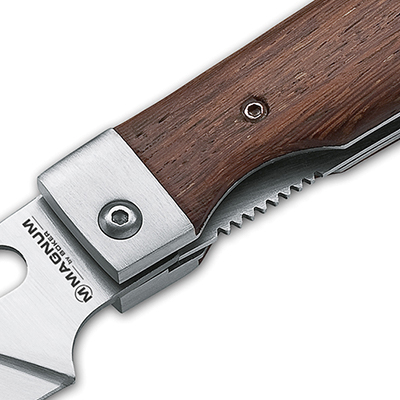
The liner lock mechanism was developed in the late 1800s and is now one of the most frequent locks found in pocket knives. A spring bar (liner) on the side of the blade's sharp edge distinguishes it.
When the spring bar is closed, it is bent inwards and held in place under pressure. When you open the knife, the strain forces liner inwards until it makes contact with the tang end of the blade, keeping it in place and preventing it from closing.
To close the knife from this position, press the liner towards the scale with your hand, allowing the blade to fold back into place manually. Different knife manufacturers have updated and modified the liner lock, each giving it a fancy name, but the basic remains the same.
Pros
- Both high-end and entry-level knives use this type of lock.
- This lock type is appealing to both newbies and experts.
- One hand is enough to close the knife using this lock.
Cons
- Heavy-duty tasks are difficult to handle with liner locks.
- Due to their thin metal pieces, they are prone to wear.
Frame Lock

The mechanism of a frame lock is quite similar to that of a liner lock. The frame lock is a type of lock that uses a portion of the knife handle as a lock. Because the handle is made of heavier metal, frame locks are more durable than liner locks.
A cut in the middle of one side of the frame. When the blade is opened, the sliced metal is bent inwards, snapping into place and retaining the tang end in place. To close the frame lock, use pressure to push the frame away from the blade. The pressure from the lock forces the handle to snap on the blade when it is opened.
Pros
- The frame locks give a powerful lockup, allowing the knives to be used for heavy-duty applications such as cutting and piercing.
- The knife may be operated on one hand.
- It provides the knives with a distinct appearance.
- They are durable since they are made of thick metal.
Cons
- If the angle of the blade and the lock are not aligned correctly, the lock may not engage fully, reducing the knife's efficiency.
Lock Back
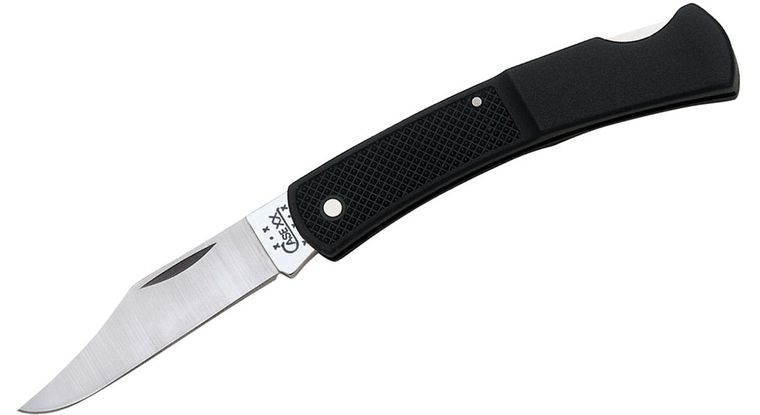
A locking blade runs the length of the knife's spine, making this a simple operation. The lock bar, which works as a "button" on the knife's spine, is immediately visible. A pivot in the center secures the lock bar in place. A spring is fixed closer to the handle's end, applying upward pressure behind the pivot joint, pushing the lock bar down. In order to open and close the knife's blade, the lock bar must be fully compressed.
When pressing downward to engage the blade, the user must exert enough power to overcome the spring tension. The lock bar is pushed out of the tang recess when enough force is exerted, and the depressing lock bar releases the lock.
The front section of the lock bar comes into contact with the blade tang once fully expanded, securing the blade in place. The lock bar is pulled downward to shut the blade, putting pressure on the spring and releasing the lock bar from the blade tang recess. The blade can be safely folded and closed with the lock disengaged. Put your fingers away from the path of the blade.
Pros
- Back Locks are ambidextrous.
- Since the lock bar is the same width as the blade stock, they are exceptionally reliable and feature robust locking mechanisms.
- They are unquestionably made for heavy-duty use.
- Since the lock bar is out of the way, inadvertent closure is less likely.
- They are far more durable than other locking mechanisms.
- If properly cared for, they are usually not susceptible to dirt.
Cons
- You have to use both hands to close the lock.
Axis Lock

The Axis Lock is unquestionably one of, if not the strongest, locking mechanisms available today. The locking mechanism for the axis is deceptively simple. It works by moving a short, hardened spring-loaded bar back and forth in a slot cut near the pivot in the handles and liners.
The spring-loaded bar, which is located at the back of the blade, serves as the button. When the blade opens, two Omega-style springs on each liner apply equal pressure, forcing the bar into a tang recess and between the large-stop pin.
Pros
- Operating an axis lock is very easy.
- It is durable.
- The pivot system is capable of withstanding over 200 pounds of pressure without breaking.
- Its ambidextrous functioning is simple and quick because to its unique integrated design.
Cons
- They are prone to accumulating dirt and debris on moving parts, which is difficult to remove.
Arc Lock

The lock is located in an arching slot on the handle that resembles a peanut. The lock bar is pushed forward by a one way spring that is always engaged. The thumb is responsible for moving the piston for the locking system. This mechanism acts as a locking bar for the blade tang.
In order to open the blade, a spring is used to push the piston over the tang and secure it. During lock opening and closing the lock travels in a circle with the pivot point directly above the position of the lock at rest. The lock bar swings out of the way when the blade is engaged, then returns to its original position once the blade is fully extended.
Pros
- They are built to last and self-adjust over time.
- They are simple to clean, which aids in their long-term effectiveness.
- They are ambidextrous.
Cons
- It is possible for the springs in Arc Locks to break.
Mid Lock

As its name suggests, the release lock is situated in the middle of the spine and functions similarly to a back lock. The spine, on the other hand, does not extend all the way to the handle's bottom.
Since the shorter spine can resist more pressure, the lock is placed in the middle, resulting in significant lock strength. It functions similarly to a back lock, with the exception that the lock is positioned in the middle of the spine, making it immediately visible.
Pros
Mid-Locks are ambidextrous.
- Since the shorter spine can tolerate more pressure, they are exceptionally reliable and powerful locking mechanisms.
- They are far more durable than other locking mechanisms.
- In general, they are not sensitive to dirt.
Cons
- The blade can only be closed safely with both hands.
Lever Lock
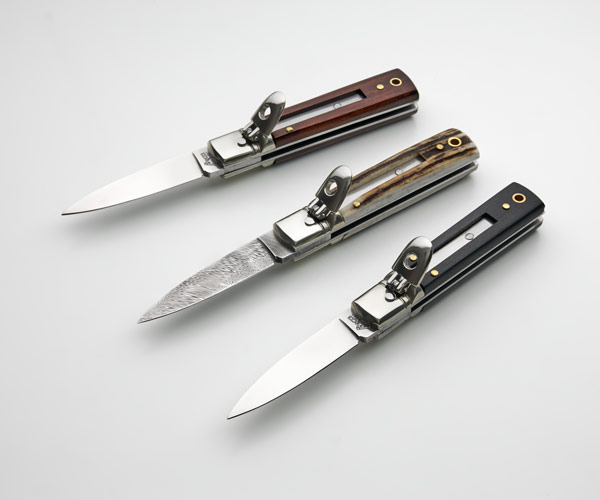
Lever lock knives open with a unique flip of a lever to trigger the spring for automated motion. These locks have been used on French, German, Italian, and Spanish knives for over a century. The lock, which is positioned at the top of the handle and is folded downward, is immediately visible. To engage the blade, the lever is dragged down and depressed.
A tensioned pin is the essential component of this mechanism, which stops the blade from shutting. The pin from the handle fits firmly into a hole in the tang of the blade when the blade is fully engaged. When the level is pressed, the pin in the tang is lifted, allowing the blade to close.
Pros
- The user does not have to exert any effort in order to deploy the blade swiftly.
- Some lever locks are stronger than others, depending on the manufacturer.
- Reverse lever lock systems are more comfortable and allow the operator to activate the blade by sliding his thumb under the lock.
Cons
- It is possible for lever locks to become loose and no longer hold their locking position.
Best Shieldon EDC Pocket Knives
Shieldon, which was founded in 1998, produces high-quality pocket knives and multi-tools with the best lock type on the international market. We specialize in creating, manufacturing, and selling effective and dependable pocket knives and multi-purpose tools for outdoor and everyday use to the global market.
Our significant manufacturing experience, together with our cutting-edge production equipment and ISO certifications, ensures that every product we produce is of the highest quality. Below are some of our best pocket knives from Shieldon.
OEM Folding Pocket Knife 3Cr13
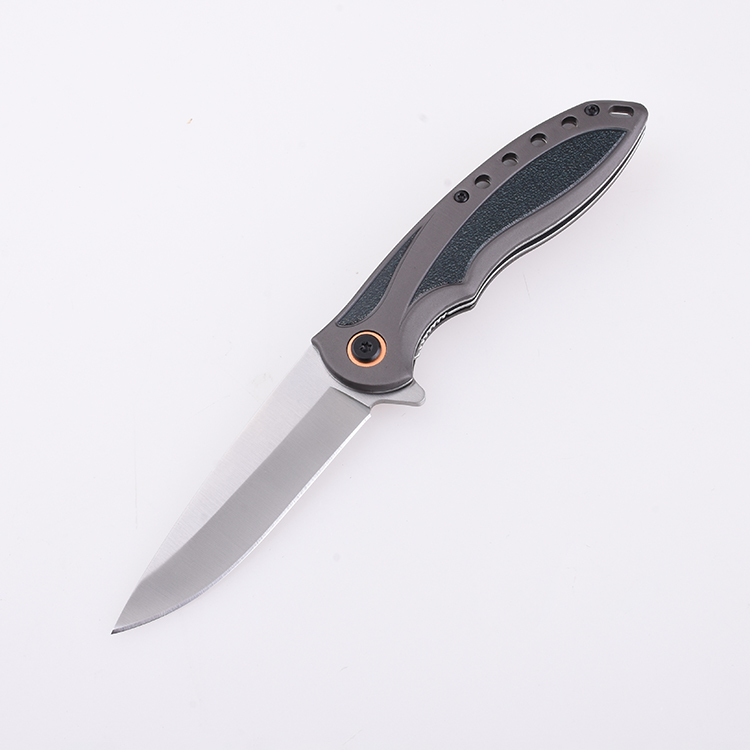
OEM folding pocket knife 3Cr13 is a Shieldon knife that uses a liner lock mechanism to ensure it is safely used. It is a folding knife with a blade thickness of 2.8 mm and a handle thickness of around 13 mm. It has a total length of approximately 199 mm and it also weighs 106.5 grams. OEM folding pocket knife 3Cr13 is a lightweight knife that should not miss in your everyday carry.
Shieldon Folding Pocket Knife Tortank 9Cr18Mov 67
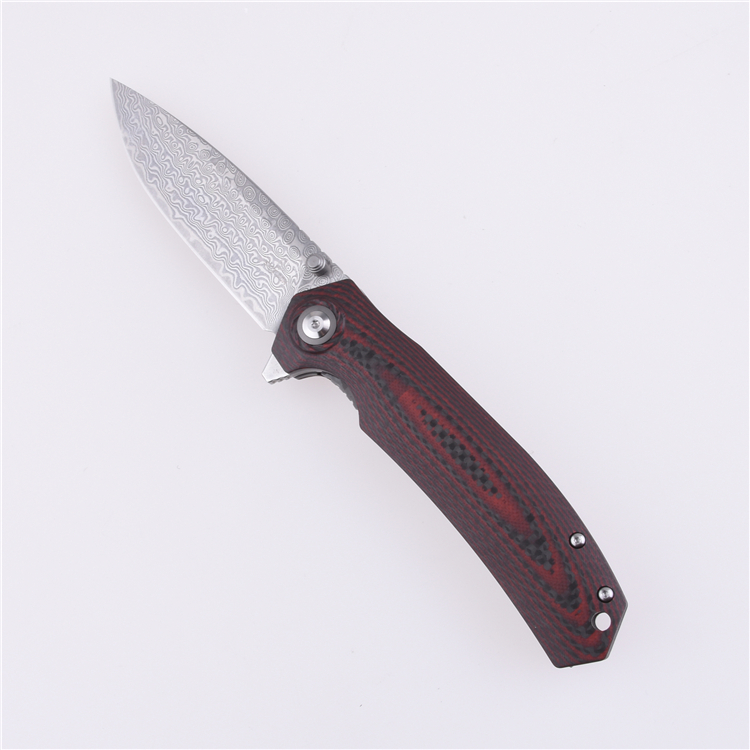
This folding pocket knife's drop point blade is crafted of 9Cr18MoV 67-layer Damascus steel. This blade has a liner lock mechanism and is exceptionally durable. You can always rely on this pocket knife. The Charkos knives from Shieldon have a higher hardness rating than their other knife alternatives.
The blade has a grade of 60 to 62, making it appropriate for a wide range of jobs. The handle is made of carbon fiber, which is 70 percent lighter than steel and 40 percent lighter than aluminum. It has high tensile strength and is built to last. It can withstand both stretching and heat. Even if you don't take care of it, it can easily withstand rust over time.
Conclusion
Regardless of the lock type you are working with, it's critical to inspect it on a regular basis to ensure that it's in good working order and free of pocket debris. A small amount of lint buildup might cause a lock to fail to engage correctly over time, resulting in harm. At Shieldon, we provide a wide variety of reliable pocket knife lock types to choose from. Kindly, contact us in case of any inquiries.
Article source: EDC Pocket Knife Lock Types - Shieldon

